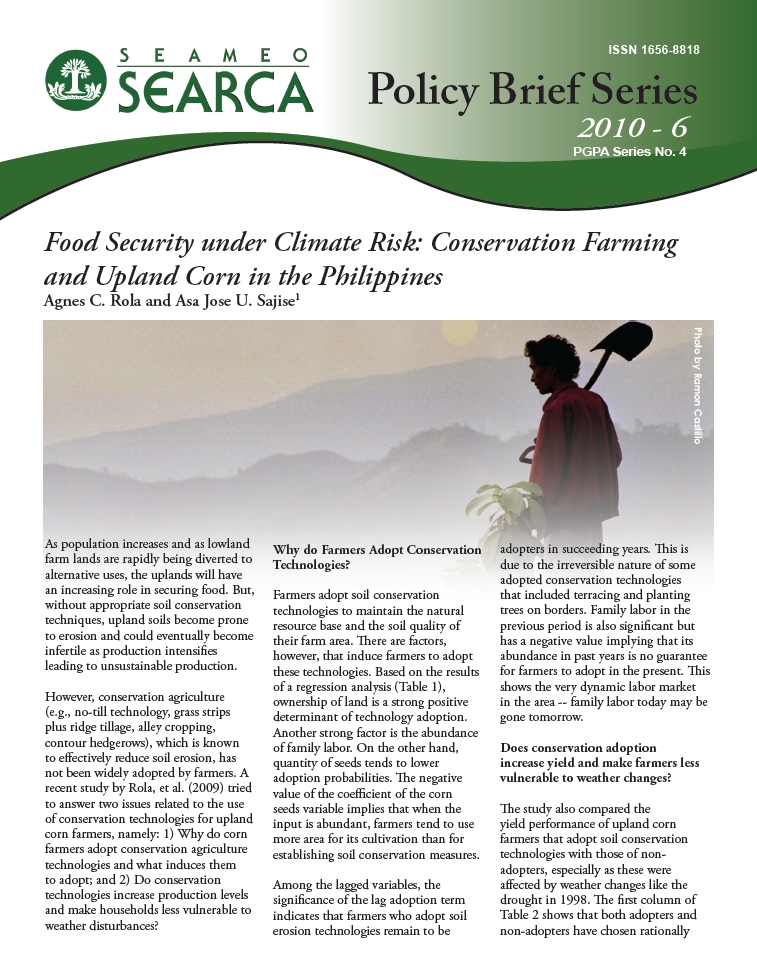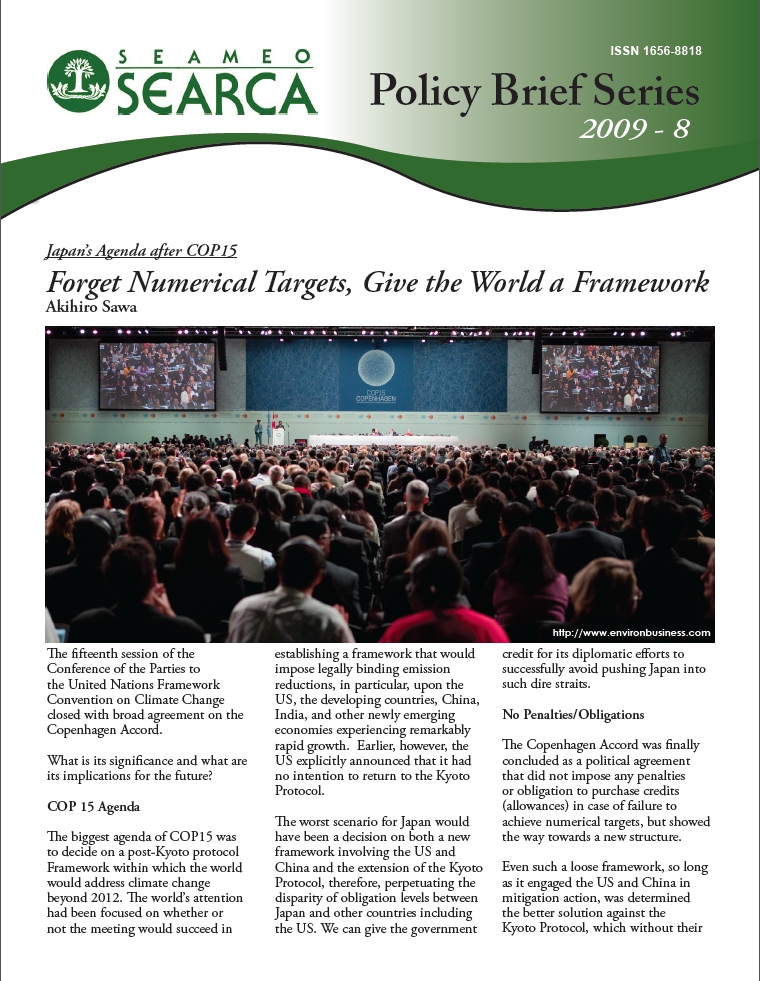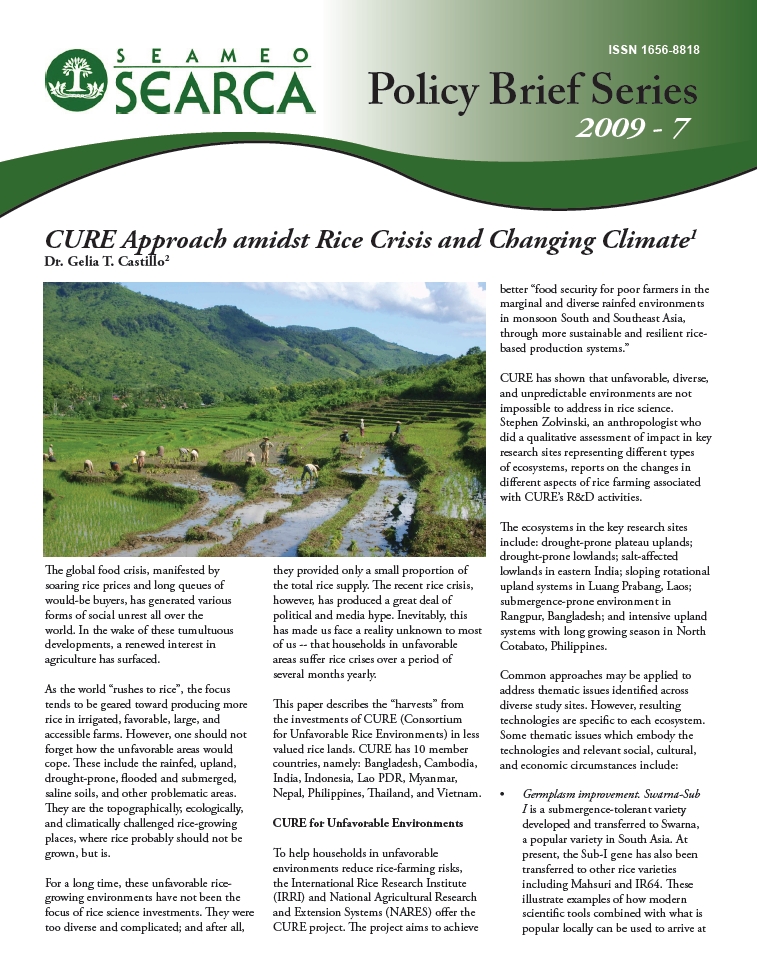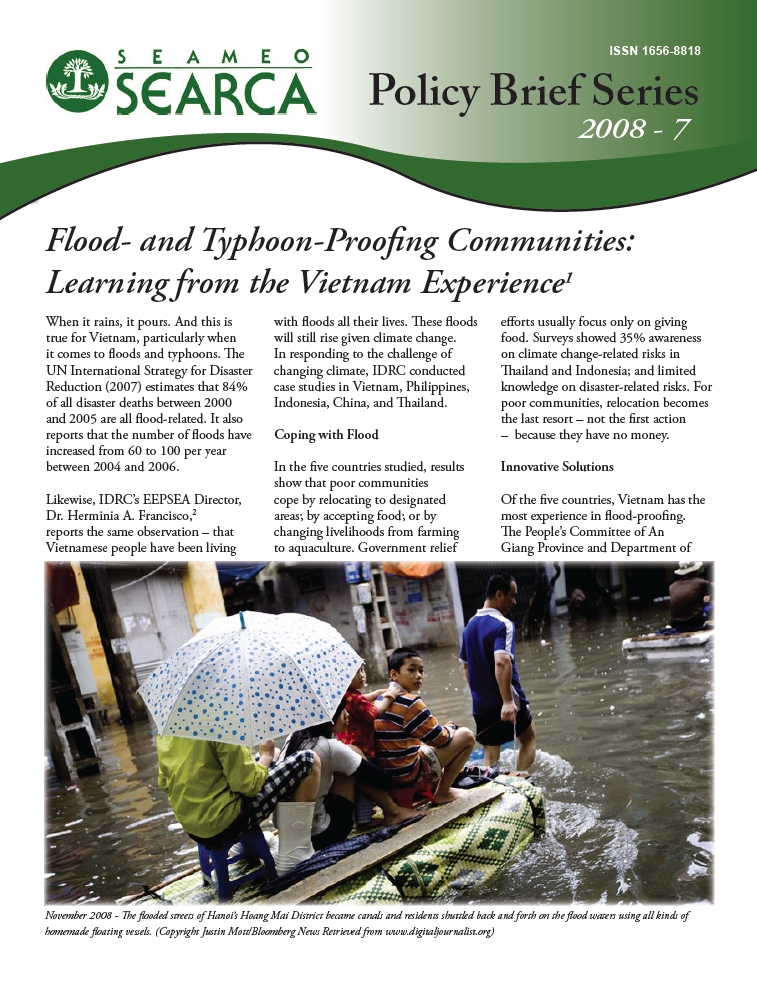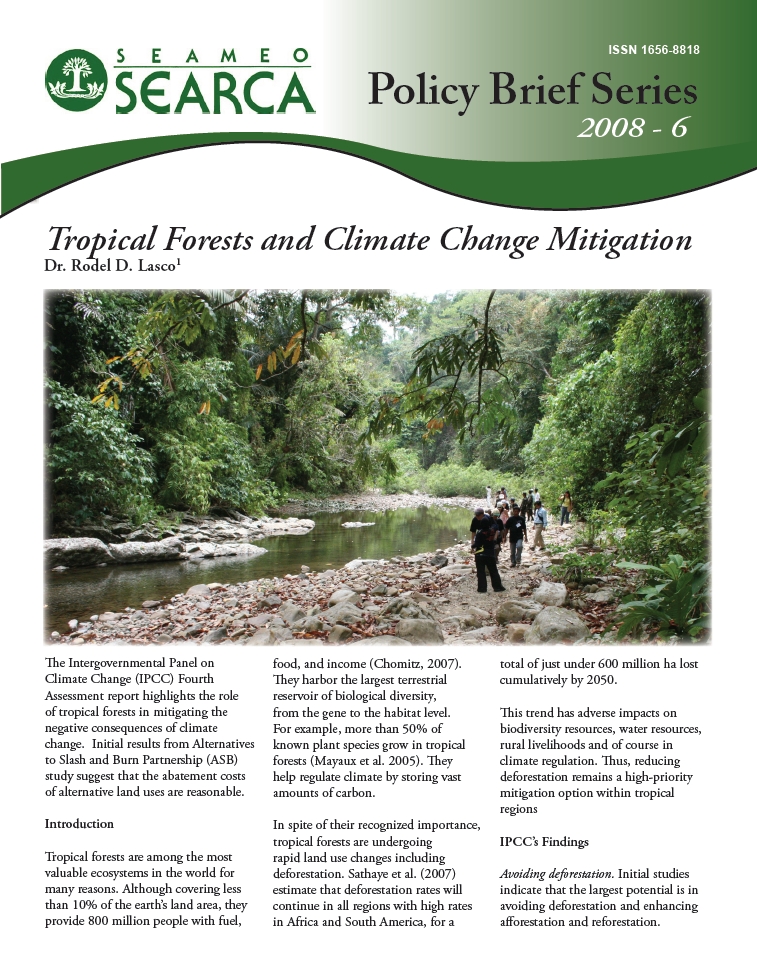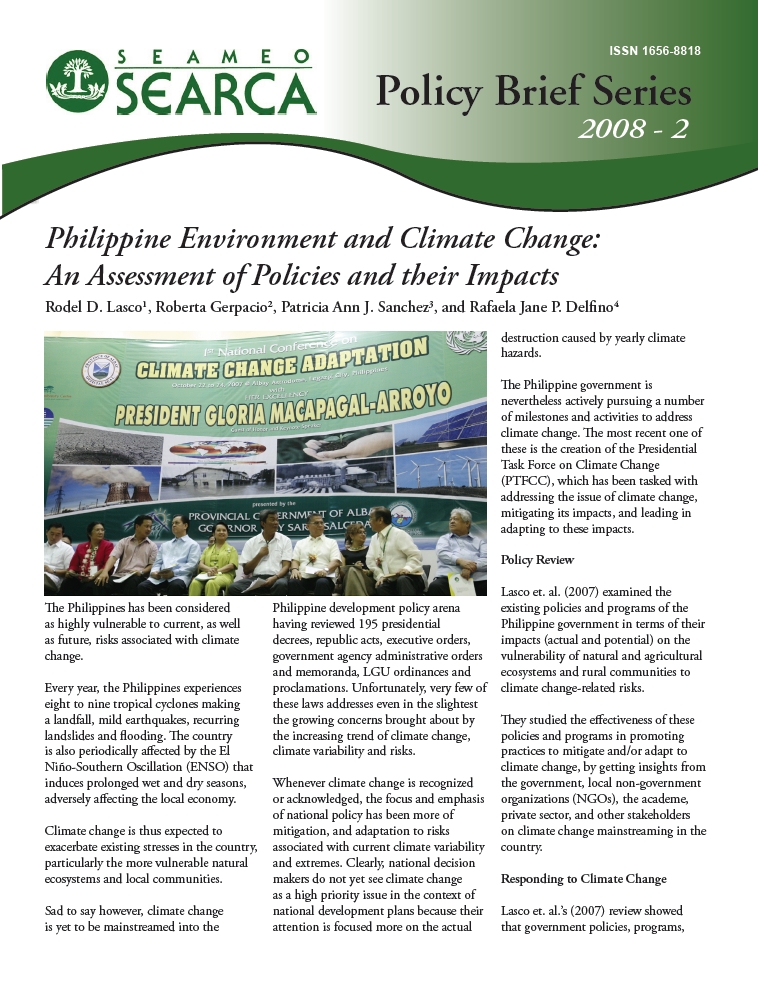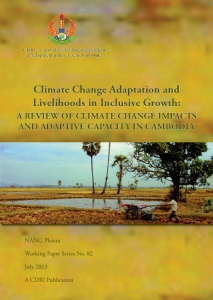Publications
This contains experience notes, adaptation notes, policy briefs, policy papers, technical reports, stories on good practices, and other publications related to climate change adaptation and mitigation in Southeast Asia not just from SEARCA, but also from KC3's partners and other agencies/institutions.
As population increases and as lowland farm lands are rapidly being diverted to alternative uses, the uplands will have an increasing role in securing food. But, without appropriate soil conservation techniques, upland soils become prone to erosion and could eventually become infertile as production intensifies leading to unsustainable production. Farmers adopt soil conservation technologies to maintain the natural resource base and the soil quality of their farm area. There are factors, however, that induce farmers to adopt these technologies. On…
The fifteenth session of the Conference of the Parties to the United Nations Framework Convention on Climate Change closed with broad agreement on the Copenhagen Accord.
The global food crisis, manifested by soaring rice prices and long queues of would-be buyers, has generated various forms of social unrest all over the world. In the wake of these tumultuous developments, a renewed interest in agriculture has surfaced. As the world “rushes to rice”, the focus tends to be geared toward producing more rice in irrigated, favorable, large, and accessible farms. However, one should not forget how the unfavorable areas would cope. These include the rainfed, upland, drought-prone,…
When it rains, it pours. And this is true for Vietnam, particularly when it comes to floods and typhoons. The UN International Strategy for Disaster Reduction (2007) estimates that 84% of all disaster deaths between 2000 and 2005 are all flood-related. It also reports that the number of floods have increased from 60 to 100 per year between 2004 and 2006. Likewise, IDRC’s EEPSEA Director, Dr. Herminia A. Francisco, two reports the same observation – that Vietnamese people have been…
Tropical forests are among the most valuable ecosystems in the world for many reasons. Although covering less than 10% of the earth’s land area, they provide 800 million people with fuel, food, and income (Chomitz 2007). They harbor the largest terrestrial reservoir of biological diversity, from the gene to the habitat level. For example, more than 50% of known plant species grow in tropical forests (Mayaux et al. 2005). They help regulate climate by storing vast amounts of carbon. In…
The Philippines has been considered as highly vulnerable to current, as well as future, risks associated with climate change. Every year, the Philippines experiences eight to nine tropical cyclones making a landfall, mild earthquakes, recurring landslides and flooding. The country is also periodically affected by the El Niño-Southern Oscillation (ENSO) that induces prolonged wet and dry seasons, adversely affecting the local economy. Climate change is thus expected to exacerbate existing stresses in the country, particularly the more vulnerable natural ecosystems…
This review outlines existing knowledge (context-specific and localized) of climate change impacts, vulnerability, and adaptation, assesses the limitations of different frameworks and approaches used by various initiatives in Cambodia, and identifies knowledge gaps for future research. It explores the impacts of climate change on livelihoods through three dimensions: (1) agricultural practices, technology, policy, irrigation, credit and markets; (2) community-based natural resources management and the roles of forest, fishery and water-user communities in protecting and managing resources; and (3) gender considerations.…
In the face of the threats posed by climate change, initiatives for the conservation of natural resources are now being prioritized globally, particularly the conservation of watersheds and forests to reduce carbon emissions. REDD+ (Reducing Emissions, Deforestation, and Forest Degradation and the Conservation of Existing Carbon Stocks) is now gaining ground as a sound mechanism to address climate change. However, countries need to mainstream and adequately implement the social, governance, and environmental safeguards of REDD+ for the mechanism to succeed.…
Watershed is critical to economic development and environmental protection in Southeast Asia. Thus, managing them effectively is key in the pursuit of sustainable development. Watershed management, however, is a complex decision-making process. The threat brought by climate change further puts stress on the already-stressed watersheds in the region, and would further complicate the already-complex process of watershed management and governance. Extensive research is therefore needed to provide an empirical database that will predict the future changes in watersheds. An integrated…
The "Redraw The Line" climate change awareness campaign, the No Impact Project and the Asia-Pacific Media Alliance for Social Awareness are holding a series of one-day seminars around Asia on “Building Critical Mass Awareness of Climate Change - Engaging Media, Advertising and Entertainment Sectors”. The events aim to stimulate dialogue and cooperation between different sectors in addressing climate change. Objectives The events aim to stimulate dialogue and cooperation in mitigating and adapting to climate change through multi-sector partnerships between different…

